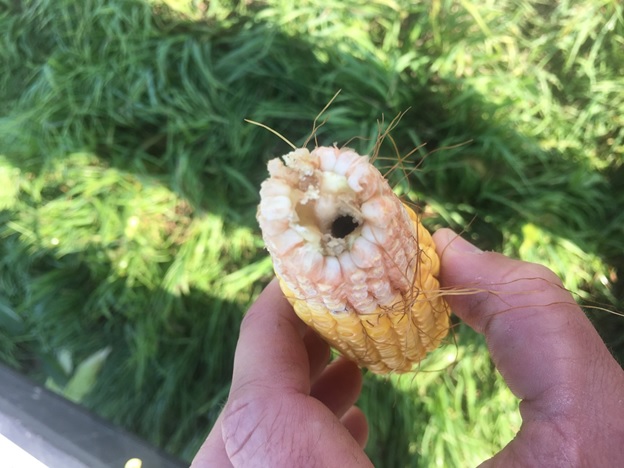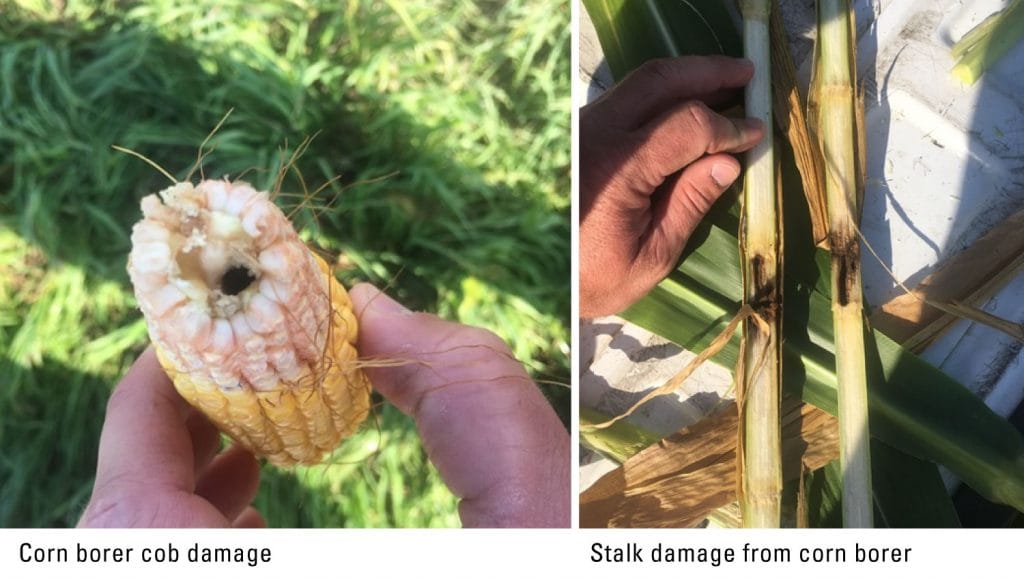Corn borer. Devastating to crops and potentially your bottom line.

Let’s come to grips with non-Bt corn. Conventional Corn isn’t an Easy Button. It is cheaper but it’s going to require your attention all summer to make sure you’re managing those pesky insects like European Corn Borer that may show up.
Today we’ll focus on how to proactively manage corn borer, and what can go wrong if it these guys get ahold of your field.
Stay ahead of Corn Borer in your crops
- Subscribe to and READ the NDSU Crop & Pest Report . Being aware of what is showing up in other fields can give you direction on what to be on the look out for.
- Monitor the NDSU Integrated Pest Management map. Here’s the season final map for corn borer in ND:
E-race
Z-race - Set and check corn borer traps:
- Check traps weekly so you can get a handle on the numbers and be aware if they’re on the rise.
- If you’re seeing an increase in the traps, first identify what insect it actually is. We can help with this so just give your Territory Manager or our Agronomy team a call.
- Once the type of corn borer is identified, we can recommend a plan of action.
- Scout early and often. Early scouting is key to raising non-Bt corn
- Scouting can start as early as V5 and go until black layer
- Make the commitment to scout your corn 1-2 times per week
- Track what you’re seeing using this Excel Spreadsheet. Download this to your smartphone so you always have it on you!
Corn borer impact
We’ve seen first-hand the damage these little guys can cause if not caught early.
Above are photos of the same plant from a field in our area. You’ll notice some characteristics on the stalk to be on the look-out for. When scouting, look for egg masses, whorl feeding and active larvae. Here’s a helpful resource from NDSU.
Thankfully the damage in these pictures was under the threshold for this particular field. However, it doesn’t take much for damage from corn borers to have a big impact on your yields. There are a lot of factors that play into it, but you can expect roughly a 5% yield loss if there is more than one plant per 1000th of an acre impacted. This worksheet can help you calculate impact and economy for your farm.
Time is money
When you’re making your seed decisions I recommend evaluating not only the cost of your seed, but also your time. What is your time worth? Calculate your time to scout 1-2 times per week and the potential costs of treatment should you have a pest problem. Then use that number to evaluate what makes the most sense for you.
Most of all, remember that you’re not alone in this. Your Peterson Farms Seed dealer is a great resource as you weigh your seed decisions. And if you decide to plant conventional corn next year we’ll be here to help you if you have questions or if issues arise.




